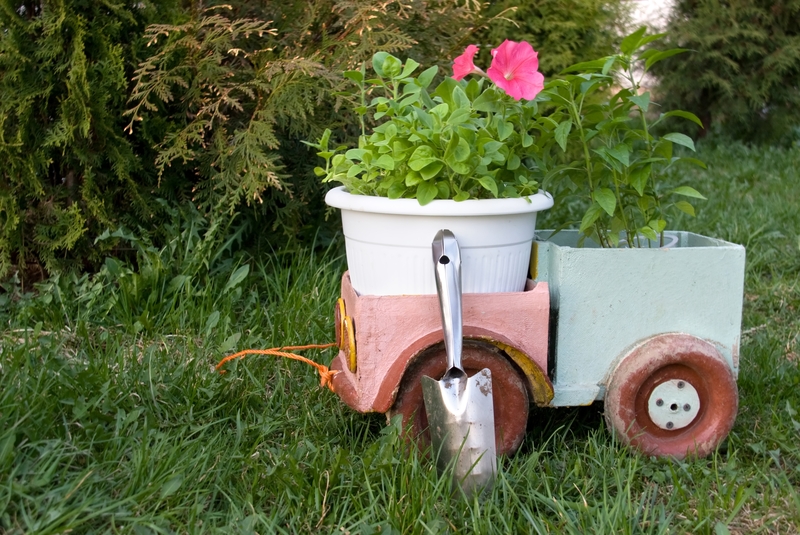Finding Value in the Old: Recycling Your Clothes Creatively
In today's fast-paced world of ever-changing fashion trends, millions of clothing items are discarded each year. The environmental impact of textile waste is significant, but with a bit of creativity and insight, you can breathe new life into your closet. Recycling your clothes creatively is not just an eco-friendly practice--it can also add a unique touch to your personal style, spark creativity, and even save you money in the long run. In this comprehensive guide, you will learn about the numerous ways you can find value in your old clothes and contribute positively to your environment.

Why Should You Recycle Old Clothes?
The recycling of old clothes is more crucial today than ever before. According to the Environmental Protection Agency, Americans throw out over 11 million tons of textiles each year. Most of these end up in landfills, taking decades to decompose, and release harmful greenhouse gases during the process. By giving your old clothes a second life, you can:
- Reduce environmental impact: Recycling reduces landfill waste and conserves resources needed for manufacturing new garments.
- Support ethical fashion: By reusing and redesigning old pieces, you help slow down the fast fashion cycle.
- Foster creativity and self-expression: Customizing old garments lets you create truly one-of-a-kind items.
- Save money: Repairing or transforming clothes is often cheaper than constantly buying new outfits.
Understanding Textile Waste
Before diving into creative clothing recycling, let's explore what happens when clothes are thrown away. The majority are sent to landfill or incinerated. This not only wastes fabric but also the water, energy, and labor invested in their production. By thinking outside the box and repurposing, upcycling, or creatively recycling, you play a crucial role in closing the loop of fashion waste.
Practical and Creative Ways to Recycle Your Clothes
There is no end to what you can do when you choose to recycle your old clothes creatively. Here are some inventive ideas to get you started:
1. Upcycling: Transforming Clothes into Something New
- Turn jeans into bags: Old denim is incredibly sturdy. Cut and sew your jeans into stylish tote bags or trendy backpacks.
- Create patchwork quilts: Use fabric scraps from worn-out t-shirts and shirts to design a memorable, cozy quilt.
- T-shirt to tank top: With a few snips and stitches, a faded tee can become a chic summer top.
- Scarf skirts and dresses: Stitch together colorful scarves or old skirts to make breezy, bohemian dresses.
- Sweater mittens and hats: Felted wool sweaters could be cut and resewn into warm handwear and headwear.
2. Repair and Redesign
- Mend and embellish: Patches, embroidery, or decorative stitches can hide holes or stains and showcase your style.
- Dye or bleach: Alter faded colors with fabric dyes, or create patterns with tie-dye or bleach techniques.
- Change buttons and trims: Update jackets and shirts with quirky new buttons, laces, or decorative trims.
- Mix and match: Merge two garments--for example, adding lace to a plain skirt or combining fabrics for a unique top.
3. Accessorize Creatively
- Jewelry from fabric: Make braided bracelets, fabric bead necklaces, or bohemian headbands using staple t-shirt material.
- Bag and wallet linings: Repurpose pretty patterns from blouses or dresses as linings for purses or wallets.
- Hair ties and scrunchies: Old shirts or leggings can become new accessories with just some elastic and stitching.
4. Home Decor from Old Clothes
- Rag rugs: Upcycle strips of fabric from unwanted garments to weave beautiful and colorful rugs.
- Pillow covers: Make throw pillows with bold prints from shirts or skirts, adding personality to your living room.
- Table runners and placemats: Patchwork or coordinated color schemes can make charming table accessories.
- Wall art: Stretch unique patterns or embroidery from vintage garments onto frames as wall accents.
5. Donate or Swap
Sometimes, the most valuable way to recycle old clothing is to let someone else enjoy them. Donating clothes to local charities, thrift stores, or shelters supports your community and extends the life of your garments. Organizing a swap event with friends is a fun way to refresh your closet sustainably.
How to Start Recycling Your Clothes Creatively
Recycling clothing in creative ways may seem daunting at first, but with the right approach, it becomes rewarding and fun. Here are some essential steps:
1. Assess Your Wardrobe
Set aside time to go through your clothing. Identify garments that are beyond repair, those with potential for redesign, and items no longer loved but in good condition. This step ensures you can find value in old clothes rather than letting them gather dust.
2. Gather Inspiration
Look for ideas online--Pinterest, Instagram, and YouTube are treasure troves for clothing upcycling inspiration. Save images, create mood boards, and don't hesitate to combine multiple ideas into your own project.
3. Acquire Basic Tools
- Scissors and rotary cutters
- Sewing kit: Needles, thread, sewing machine (optional but helpful)
- Fabrics, dyes, and trims
- Embroidery hoops, fabric markers, and patches
Tip: Most projects require little to no sewing skills. Start simple and build confidence.
4. Start Small, Then Experiment
If this is your first time trying creative clothing recycling, transform something minor--like turning socks into wrist warmers or a t-shirt into a tote. As you grow more comfortable, try more elaborate redesigns.
5. Share Your Results
Post your creations on social media, or gift upcycled crafts to friends. Sharing your work can inspire others, spread awareness, and grow a community of mindful recyclers.
Benefits of Creative Clothing Recycling
Recycling your clothes creatively brings benefits that extend well beyond personal satisfaction. Here's why it's worth making a habit:
- Reduces landfill waste: Every upcycled item equals one less in the dump.
- Decreases resource consumption: Less demand for new fabric reduces water and energy usage overall.
- Promotes artisan skills: Learning to sew, embroider, or work with fabric enhances self-sufficiency.
- Leads to unique personal style: Your clothes will stand out in a sea of mass-produced fashion.
- Strengthens local communities: Donating, swapping, or selling recycled fashions builds stronger social bonds.
Creative Recycling: From Hobby to Business
Did you know that many successful clothing brands began as upcycling projects? If you discover a passion for clothing recycling ideas, there's potential to turn it into a side-hustle or full-time occupation. Consider the following avenues:
- Sell on marketplace sites: Platforms such as Etsy, eBay, or Depop are perfect for unique, upcycled pieces.
- Organize local workshops: Teach others how to repurpose their wardrobes and build a local following.
- Brand development: Create a label centered around unique, eco-friendly designs made from recycled materials.
- Fashion shows and pop-ups: Feature your creations at markets or independent fashion events.
Remember--creative recycling intersects perfectly with the booming trend of conscious consumerism.
Eco-Friendly Clothing Disposal: Other Options
Not every item is fit for creative reuse. If your garment is truly beyond saving, consider these additional eco-friendly options:
- Textile recycling programs: Many cities have drop-off points where worn-out clothes are processed into insulation, industrial rags, or even new fibers.
- Composting natural fibers: Cotton, linen, hemp, and wool pieces (free from synthetic dyes or blends) can decompose in home compost setups.
- Retailer take-back schemes: Some brands offer collection programs, turning old garments into new product lines.
Clothing recycling in all its forms keeps textile waste out of landfills and helps shift the fashion industry toward sustainability.
Inspiring Stories of Clothing Recycling Success
The world is full of inventive people turning old clothes into treasures. Here are a couple of stories to inspire your next project:
- Zero-waste designers: Designers like Stella McCartney and Patagonia lead fashion's eco-friendly movement by using recycled materials in their collections.
- Grassroots campaigns: In cities worldwide, social enterprises collect unwanted clothes and give them second lives as designer goods, job training tools, or emergency supplies for those in need.
- Global movements: Campaigns like Fashion Revolution and #LoveNotLandfill raise awareness about the importance of clothing reuse and recycling.

Tips for Sustainable Clothing Care
The most sustainable garment is the one you already own. Proper care and maintenance of your existing wardrobe will prolong the lifespan of your clothes--and means you'll have even more material for creative recycling down the road.
- Wash less frequently: Washing wears down fabric--only clean when necessary with cold water and gentle detergents.
- Repair minor damage promptly: Mend small tears or lost buttons before they become bigger issues.
- Store properly: Fold knits, hang structured pieces, and keep moth-prone materials like wool in sealed bags.
- Rotate your wardrobe: Seasonal rotations bring forgotten favorites to the front of your closet.
Adopting a sustainable mindset ensures your wardrobe lasts longer and reduces your environmental footprint.
Conclusion: Discovering Endless Value in Old Clothes
Recycling your clothes creatively is more than just a trend--it's a sustainable, stylish, and fulfilling approach to dressing and design. As you explore the endless ways to find value in your old clothing, you'll not only help protect our planet, but also discover new sides of your creativity and personal style. Embrace the old, unleash your inner designer, and start your own journey in creative clothes recycling today!
Remember: Every garment has a story. What will yours become next?